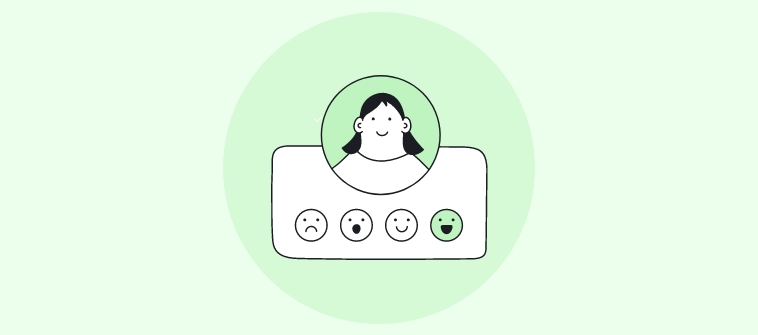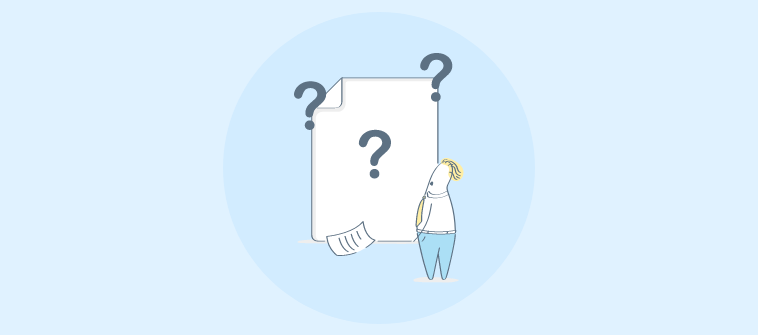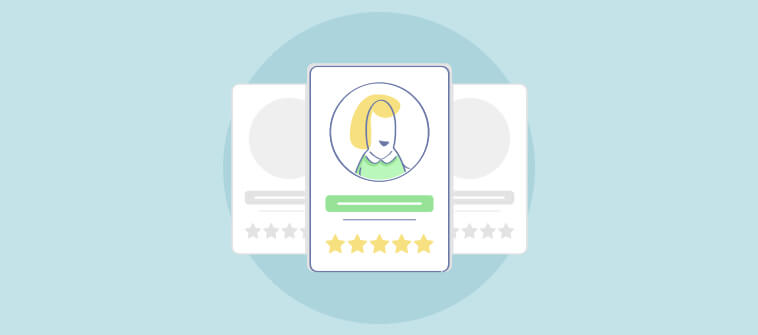
Today, customers have diverse needs and one solution for all isn’t going to work. The identification of what customers want is important and based on different factors, marketers need to divide people into market segments.
That’s exactly what market segmentation is all about! With the help of certain shared factors, a wide population can be put into subgroups for targeted marketing. This lets your marketing team get better insights into the target audience.
Think about it like a cheat sheet that includes different groups of customers. Each group has a tag that says what the customers in this group like and what are their buying habits. Isn’t it awesome and easier for you to create marketing strategies? You precisely know the expectations of different customers with this marketing cheat sheet.
Let’s check out how you can leverage the power of marketing segmentation.
In this blog guide, we will be discussing
What is Market Segmentation
Market segmentation definition simply says that it is the subdividing of customers into different subsets where each subset has different characteristics. This subset is often called a market segment that consists of a group of customers with similar needs and wants.
In more simple marketing terms, when you try to reach your customers with ad campaigns and messages, targeting the right audience is important. If you show your ads to everyone, only a few people will go down your sales funnel to become customers. Why so? Because you are reaching a lot of people that aren’t interested in your product or service.
The marketing segmentation process makes it feasible for you to engage with those who are likely to be interested in your products or services. There’s more to it. Let’s now see the importance of market segmentation.
Importance of Market Segmentation
Market segmentation can assist you in defining your target audiences to understand them better. For marketers, it is a good practice to identify the right market for their products and services. For publishers, segmentation marketing offers more accurate targeting options so they can customize their content strategies for different audiences.
Let’s check a simple example to understand the importance of market segmentation.
Suppose, you are a marketer who is advertising a new brand of bakery products. You can split your potential audience into different segments based on whether they like cakes or doughnuts or anything else. Then further segment these audiences based on what flavor of cakes they like, and so on. You can show them specific ads based on their preferences. The publisher can use this information to curate and display content about cakes and specific flavors to cake lovers and different content for other bakery products.
So, it is quite clear that marketing segmentation lets you display the right content to the right group of customers. Instead of throwing your single message to all people, you can use targeted content and ads to increase customer engagement. This drives your marketing campaigns to success and boosts your revenue.
4 Basic Types of Market Segmentation
There are four main customer segmentation types that are generally used in marketing strategies. Let’s explore each one of them.
1. Demographic Segmentation
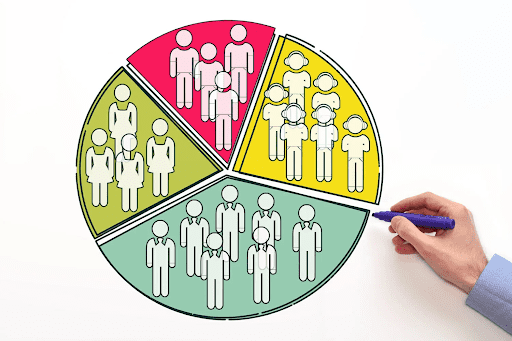
Source: CFI Education Inc
One of the most popular and broad segmentation types, demographic segmentation is based on non-character traits. Demographics are simply the breakdown of customer personas based on their age, gender, etc. Some of the most common traits considered in this segmentation are:
- Age
- Gender
- Religion
- Income
- Ethnicity
- Family size
- Marital status
- Education level
- Occupation
The above examples are more helpful in understanding B2C audiences. As for B2B audience, demographics segmentation examples include industry, company size, and job function.
How is this helpful? For example, a luxury ornamental store owner would target an audience with higher income. A B2B example can be a SaaS brand that offers a marketing platform for small businesses. They are likely to target marketing managers at start-ups and smaller companies who will benefit from your specific solution.
This information is easy to get because it is factual and statistical. With the help of demographic survey questions, you can ask different groups of people on social media about such basic details to serve them better. There are many apps as well that track granular demographic data for contact tracing. When this information is combined with other types of segmentation, you can narrow down your market even more.
2. Geographic Segmentation
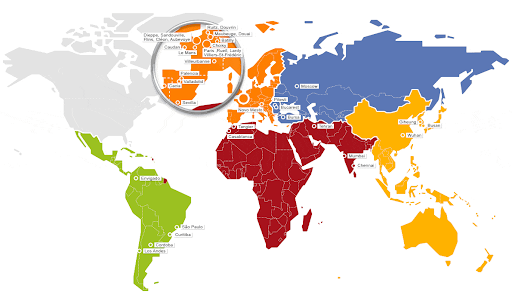
Source: Smush CDN
The simplest type of segmentation categorizes your customers based on their physical location. The customer’s location is helpful in determining their needs and offers you an opportunity to run location-specific ads. Below are some of the geographic examples.
- ZIP code
- City
- Country
- Urban or rural
- State/Region
- Climate
- Population density
Let’s say, a marketer is trying to advertise winter boots and accessories. Being aware of customers’ location allows the marketer to come up with ads specific for different regions where the climate is cold or icy or it’s wintertime.
E-commerce brands are more likely to benefit from this market segmentation as they can use geo-targeting to display location-based popups. It helps in presenting region-specific or season-specific products to the customers.
Businesses operating in different countries across the globe can change the content language for natives. This is very helpful in running successful email marketing campaigns and as people of different countries have different interests, you can take these preferences into consideration for content marketing.
3. Behavioral Segmentation

Source: WebEngage
The most useful one for all e-commerce businesses is behavioral segmentation. It segments the markets based on customers’ behavior and decision-making patterns. This consumer segmentation is useful for marketers in understanding how the customer acts. The examples of this segmentation include:
- Purchasing habits
- Spending habits
- Browsing habits
- User status (First-time/regular)
- Previous interactions
- Loyalty to brand
- Occasion/event
Dividing the audience based on the behaviors they display and how they interact with your brand lets you understand their actions. With the help of this segmentation analysis, you can easily deliver highly relevant and targeted marketing messages.
A B2B example for this can be a customer who downloaded your free marketing guide. You can focus on such leads in your next email to convert them with relevant offers. A B2C example can be a customer who has purchased a couple of cakes from your bakery store. You will target these customers differently than the ones who just landed at your store.
4. Psychographic Segmentation

Source: Googleapis
Psychographic segmentation is all about customers’ interests and personalities. These attributes can give you valuable insights into your audience’s preferences, motives, and needs. You can categorize the audience related to their characteristics and personalities. Have a look at some of the examples that you should consider.
- Personality traits
- Lifestyles
- Interests
- Values
- Beliefs
- Attitudes
- Social class
- Priorities
- Motivations
- Psychological influences
These factors are more difficult to identify than other segmentation variables as these are subjective. There is no specific data source for this and requires in-depth research to understand the customers. With proper research, this psychographic information can be helpful for the customers in your demographic segment.
The demographics give you the basic information about who your customers are but psychographics provides you insight into why people purchase, click certain links, ignore products, or take more actions.
Let’s take one example. You sell lifestyle products and based on demographics, you are targeting a segment of women (age group: 20-35). While some members of this segment are converting, others are not. When you add the psychographic information into the lot, you may find that women who care about their lifestyle and are always up with the trends, contribute to your conversions. Based on this, you can create content and ads showing the benefits and reviews of your products to convert more people.
Other Types of Market Segmentation
As we earlier mentioned, there are four main types of segmentation we discussed above, but there are some more segmentation strategies you can use for better results. Let’s have a look at these less known types of segmentation.
-
Value Segmentation
Not everyone likes to spend a similar amount of money on different purchases. Based on the transactional worth of your customers, you can subgroup your market segment. To determine this worth, you can check the purchase history for the number of purchases and the value of the items/services they purchase.
-
Technographic Segmentation
Technology plays an important role in marketing. According to the role of technology in customers’ lives, you can make segments to learn who is an early adopter and who is a slow one. You can even recognize this with the device information from which the user is accessing your website. Using personalized campaigns, you can present device-specific offers to different segments of customers.
-
Generational Segmentation
The time period in which different people are born heavily influences their values, experiences, and attitudes. You can segment the customers by generation as the people of the same generation may share certain behaviors, beliefs, and personality traits. Surely, not all people are the same, but it can give you an idea to target a variety of different generations.
-
Firmographic Segmentation
A segmentation that focuses on B2B companies to divide different businesses into groups. It is similar to demographics that identify different groups of people. Here, you need to identify different segments based on the characteristics of companies (potential customers) by looking at data like industry type, location, revenue, number of employees, etc. With these business insights, your sales/marketing team can come up with effective strategies to close deals.
-
Seasonal Segmentation
People purchase certain products during major holidays like New Year, Christmas, Halloween, Thanksgiving, etc. Such seasons impact purchasing behaviors and you can segment your audience based on this. Targeting such market segments with the right advertisements can drive your campaigns to success in different seasons.
-
Lifestage Segmentation
Customers have different priorities, preferences, and interests in different stages of their lives. You can consider events like going to college, getting a job, getting married, having children, etc. to segment your market into different groups. People need different things at these stages and as per the products/services you provide, you can target customers with relevant offers.
How to Conduct Your Own Segmentation Research
Now that you have looked at the different market segmentation strategies and how they can prove to be effective in your marketing campaigns, it is time to check the research and implementation part.
1. Analyze Existing Customers

Source: DemandGen International, Inc
The audience analysis in market segmentation starts with existing customers. You need to begin with your customer base first to identify trends and patterns. There are certain ways to do this.
- Interview the customers directly: The best way to get accurate feedback is by conducting interviews with existing customers, prospects, and leads. With the help of survey forms, you can ask important questions that are helpful for the four types of marketing segmentation.
Read more: How to create a survey
- Interview your sales team: Sales team is generally the one that is in direct contact with the customers. You can use them as a valuable resource to find trends and pain points of customers. You can also gain insights into what is the thought process of customers while purchasing your products/services.
- Gather information from website analytics: A lot of visitors land on your website from different sources. You can learn about the customers’ behaviors by looking at the heatmap, scroll pattern, page on time, referral sites, number of clicks, etc. Use Google Analytics to find information about customers’ interactions with your website.
- Analyze your business data: Your excel sheets and sales/CRM tools must have a lot of data about your customers and their purchases. Use these tools to identify the trends related to behavioral segmentation and you will know how often customers visit your store, how much they like to spend, and the types of products they browse.
- Learn about customers’ geography: With the help of Google Analytics or other such tools, you can gather the details for geographic segmentation. Find out where your audience lives across the world and it will be easier for you to create market segments.
- Analyze what customers search for: Gather information about what your customers are searching for to get inside their minds. With a keyword research tool, you can easily check the terms that your competitors are targeting. Use this data to identify the topics, products, and content that matters the most to your target audience.
2. Create Buyer Personas

Source: IMPACT
With the help of thorough research and audience analysis that you conduct in the first step, you will have a pretty good understanding of your existing customers and leads. The next step is now to create buyer personas using this data. It should describe the type of customers that are likely to convert.
The fictional description of your ideal customer lets you clearly visualize the audience that you are looking to attract and target. It is helpful in deciding the market segmentation strategy. There are a lot of templates available online to create different personas for different products and services that you offer.
3. Analyze & Identify Market Segment Opportunities
As you now have the buyer persona to describe your ideal customer, it is time to look for market segment opportunities. It is any trend that can help you with new marketing strategies. You first need to look at what your brand offers, what problems you solve, what are areas where you beat your competitors, what your team likes to serve, and so on.
Now go back to the audience analysis and buyer persona section to look for opportunities. Ask questions like what customer characteristics and behavior are most common? What do large segments look for? What segments are not being served? What segments qualify or fall in your areas of expertise? With these, you will identify potential opportunities.
4. Research Potential Segment, Test, & Improve
Market segment opportunities are not always right. For that, you need to verify first that it is a good option or not. Before diving into your marketing campaigns for new segments, check the competitors and whether the audiences are interested in this new market segment.
With the help of keyword research, check whether the audience is searching for terms related to your new market segment. Check for phrases with high search density and low competition to target your audience. Look for brands that are already ranking on top in the market. Based on that, you can see if you can compete and how you can compete with uniqueness.
Once you have the new market, start creating some campaigns to test your marketing ideas. Track the results and see what works for your audience. Make small changes in your tactics, see the results, and improve the campaign results with what you learn.
Common Market Segmentation Mistakes to Avoid
Once you create your market segments, make sure to avoid these common mistakes that marketers make.
- Working with the same segments without change: If a certain market segmentation strategy isn’t producing efficient results for your business, it is time to make changes. You should focus on your ROI and must practice A/B testing to constantly improve your marketing results.
- Making your segments specialized or very small: Segments that are small are likely to be inaccurate and can lead you away from your objectives. Similarly, an oversized segment can give data that might not be statistically accurate. You need to keep an average/ideal size of the segment.
- Looking only at past behaviors: Demographics and purchase behavior are important for creating segmented groups, but it won’t solely help you to create targeted ads and content. The behavior of the audience evolves over time and you should focus on attitudes and values as well while creating market segments.
- Using data incorrectly: Sales and marketing data is surely in massive amounts. Lacking in identifying which data drives performance can lead to inaccurate results. Also, you should not solely rely on your existing customers’ data. With the help of surveys, polls, and social media, you need to gather additional information from your prospects.
- Not aligning segments with business objectives: Ensure that you define your segments as per your business goals. According to your product, select your audience. If your target is to increase retention, then analyze and segment data accordingly to send relevant, personalized offers.
Benefits of Market Segmentation
Market segmentation offers a lot of benefits to business owners, marketers, publishers, and others. Here are some of the benefits.
- Keeping your brand unique: Market segmentation not only focuses on reaching your target audience but also differentiates your brand in the market. It allows your customers to see the actual true value of your brand with the targeted marketing that speaks to them. It helps in maintaining uniqueness among the competitors.
- Improves campaign performance: With market segmentation, you can target the right customers at the right time with the right content. By learning about the audience’s specific needs and interests, you can better tailor your marketing tactics. As the performance improves, you get better ROI.
- Identify new trends: Trends change frequently and social media can provide real-time behavioral insights of customers. Marketers should always lookout for new trends that can offer new opportunities to solve customer problems.
- High-quality leads: The lead generation process becomes more effective with market segmentation. With more targeted marketing, you are likely to reach the right audience and that results in generating more quality leads to nurture.
- Improves brand focus: You can easily focus on your efforts and can link your brand identity to a specific type of product or service. Starting with a single type, you can further expand the offerings as your company grows.
- Establish brand trust: Companies want to establish a relationship with their customers so they keep coming back. Market segmentation helps you identify this segment that is likely to make future purchases. By focusing on such customers and giving them a delightful experience, you can easily increase brand loyalty and awareness.
- More efficient spending: Targeted marketing using market segmentation is all about getting better returns on investment. You want to waste less money on marketing campaigns that are for the wrong audience.
- Improved customer retention: Following the same marketing strategies for new and existing customers is not a good tactic. By identifying the needs and interests of old customers and cold leads, you can run more effective marketing campaigns to retain these customers.
- Identifying new markets: When you research for segmentation, you can easily come up with new areas of the market that you didn’t consider before. This leads to opportunities lying in new products and services.
- Informed decision-making: As you identify customers’ behavior and interaction with your products and services, you get to know about different parameters. These include pricing, quality, shipping fees, etc. Your team can make better decisions to improve these as per customers’ needs.
Time to Target the Right Customers!
Market segmentation helps you in getting a more clear and accurate picture of your audience and business goals. By following these market segmentation techniques, you can easily serve the right customers to grow your business.
To get better insights and to understand your customers or prospects better, you can use surveys, online questionnaires, and polls from time to time. Get the right data and make informed decisions to drive your marketing strategies.
FREE. All Features. FOREVER!
Try our Forever FREE account with all premium features!


